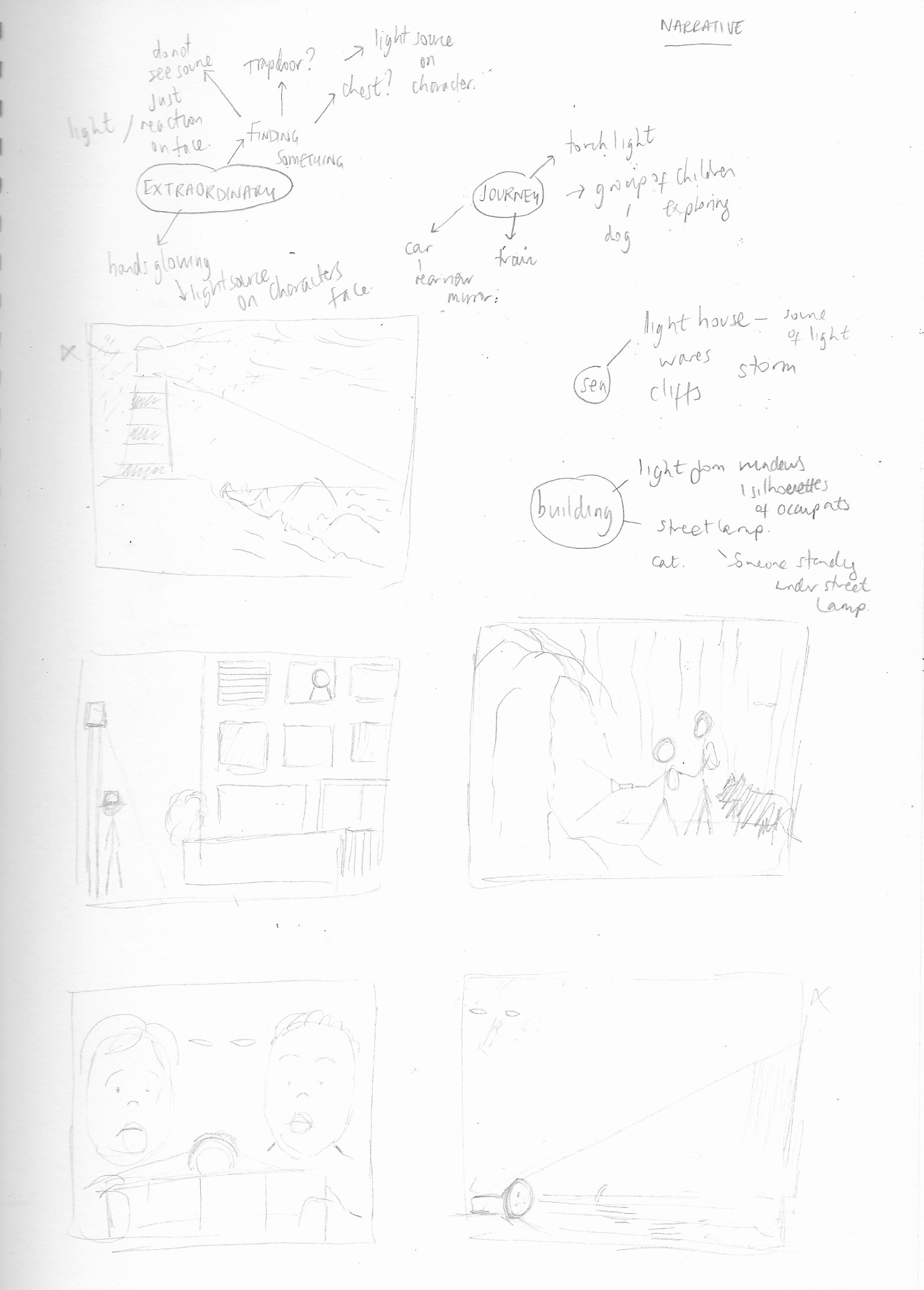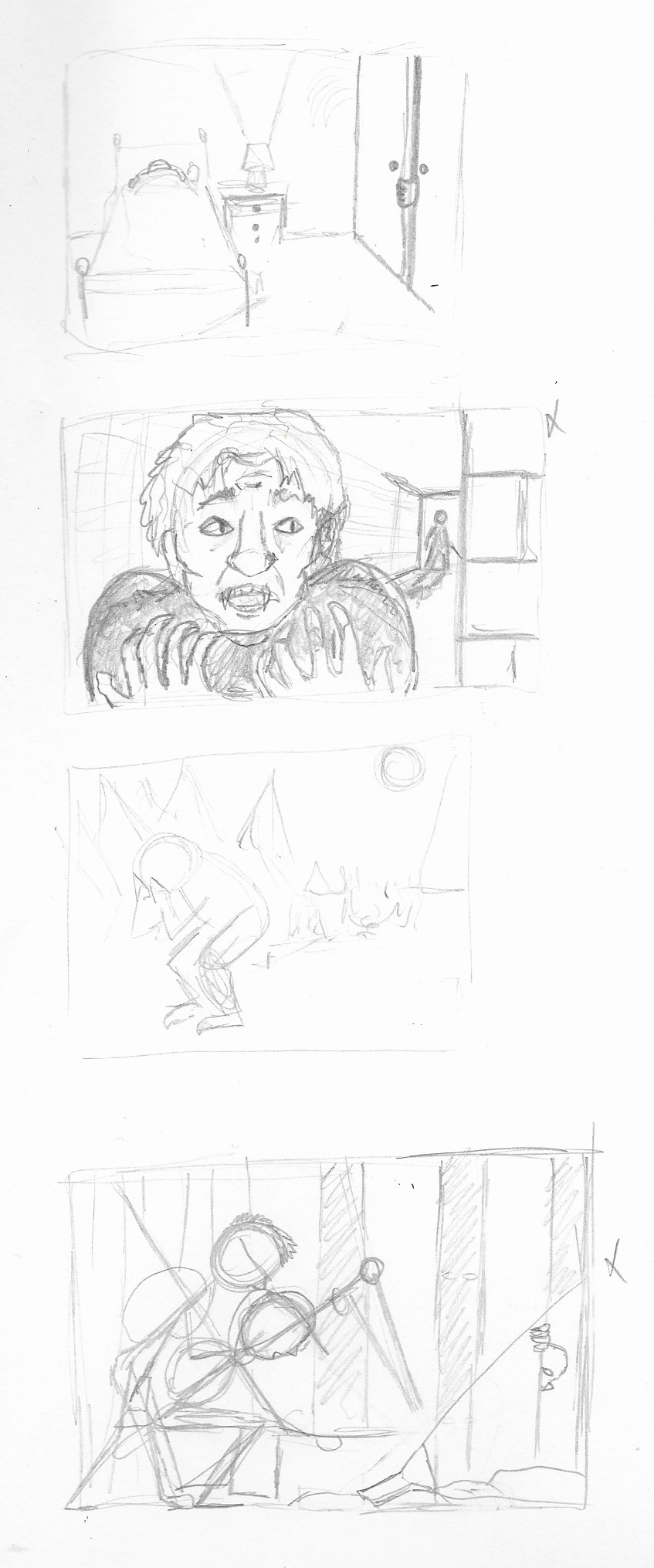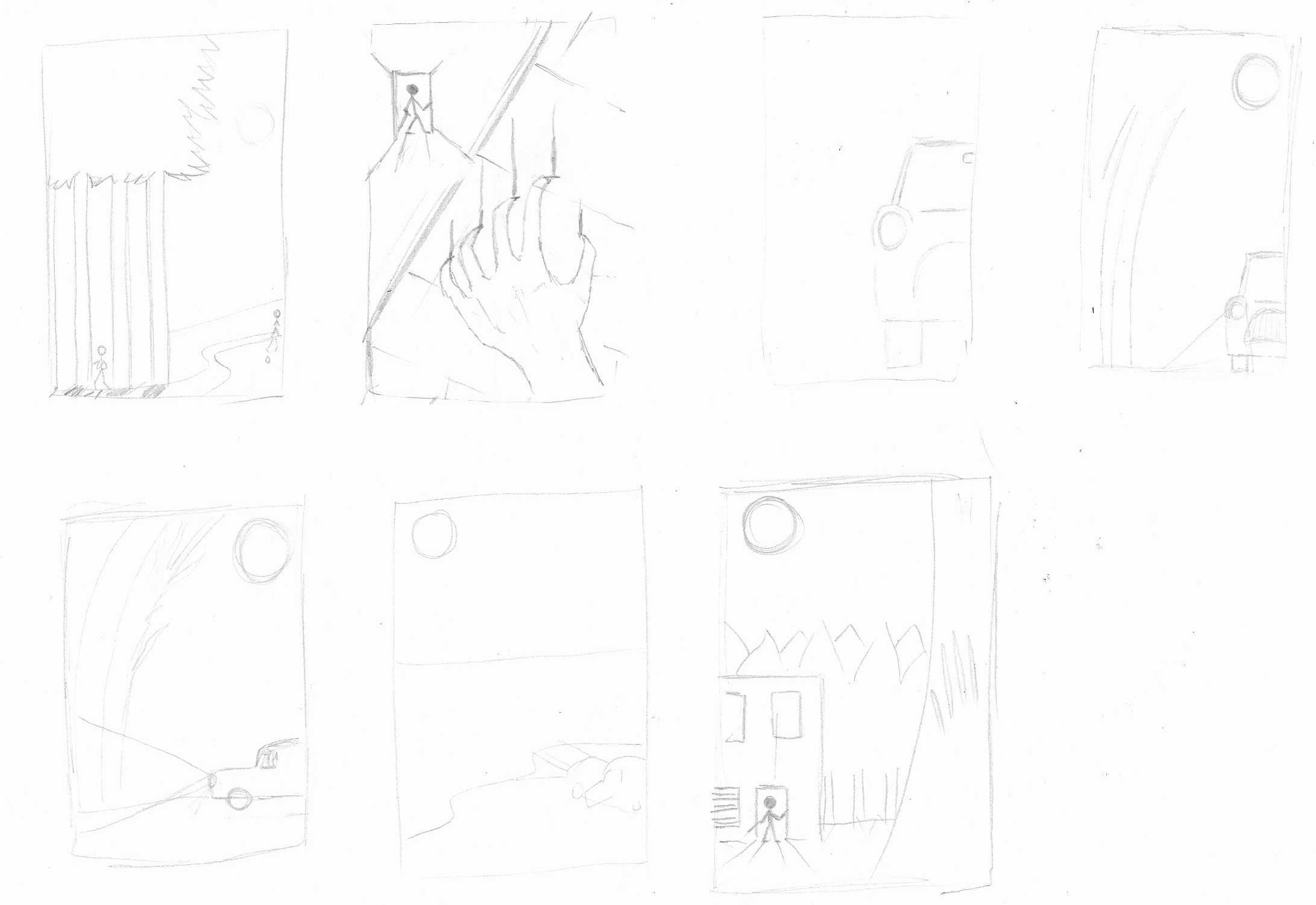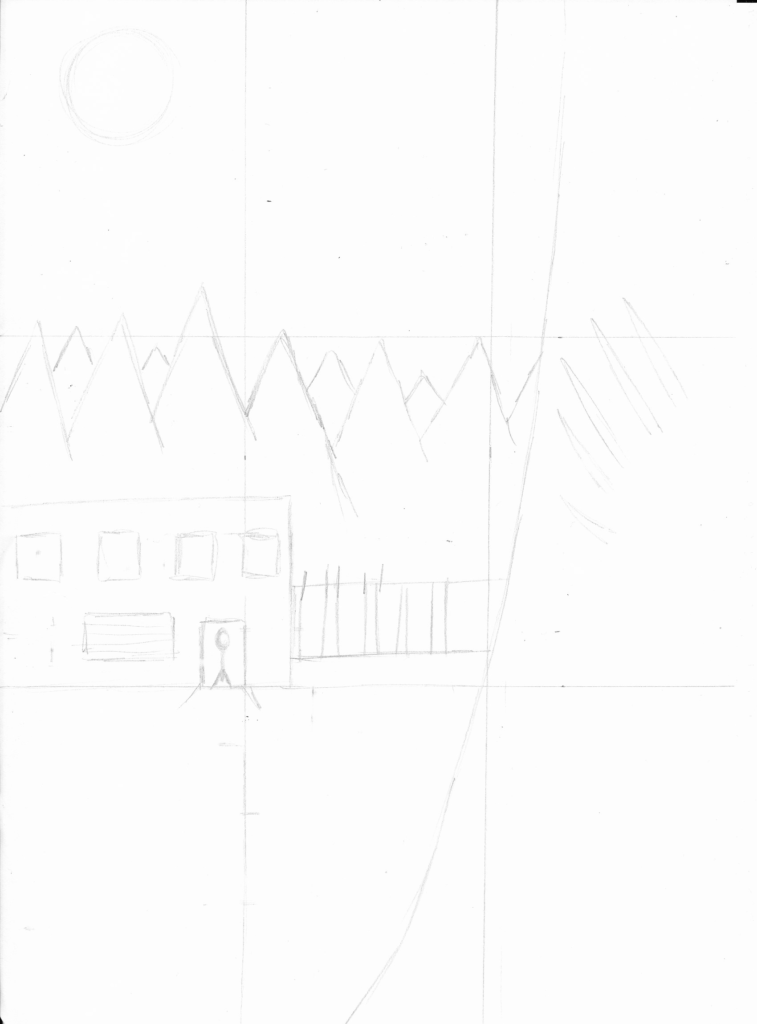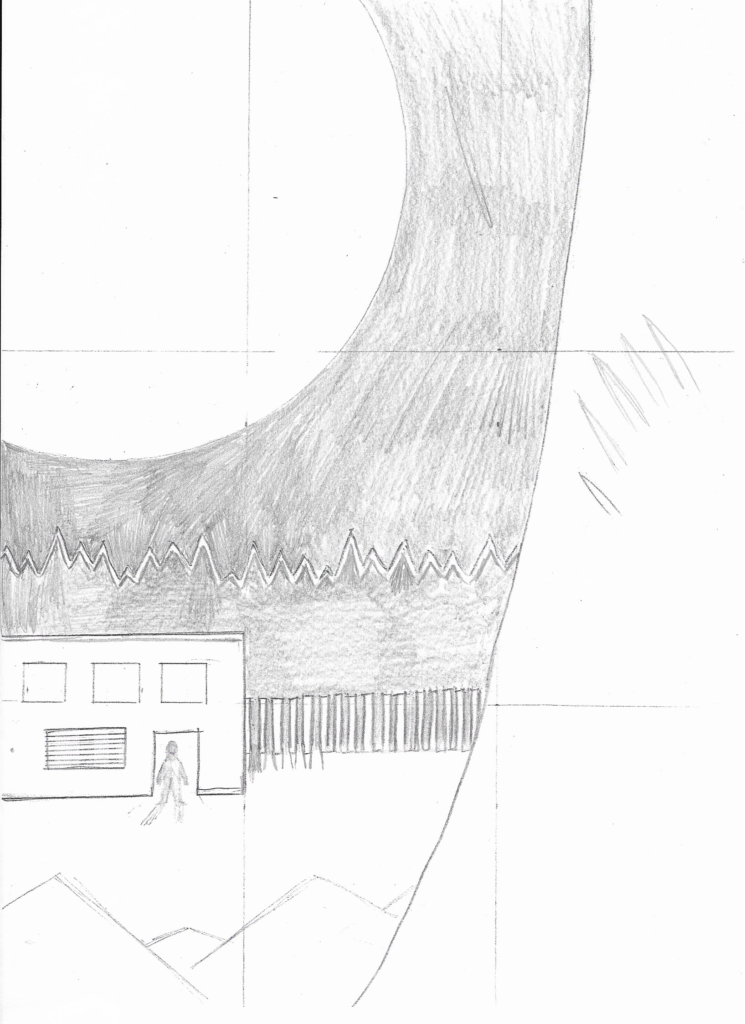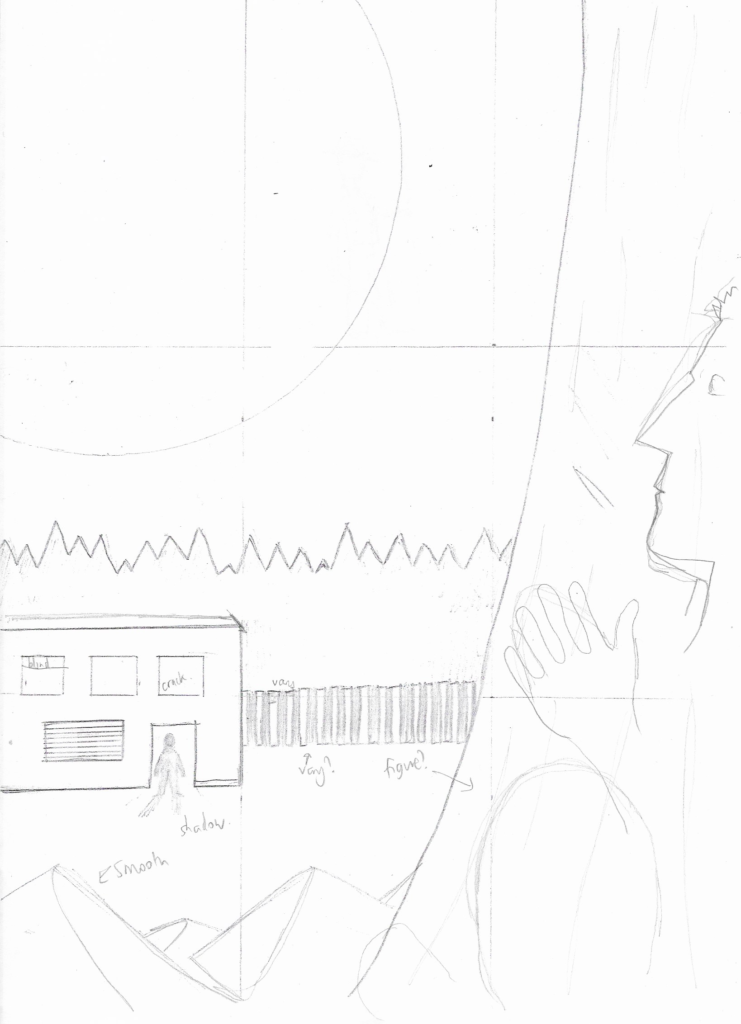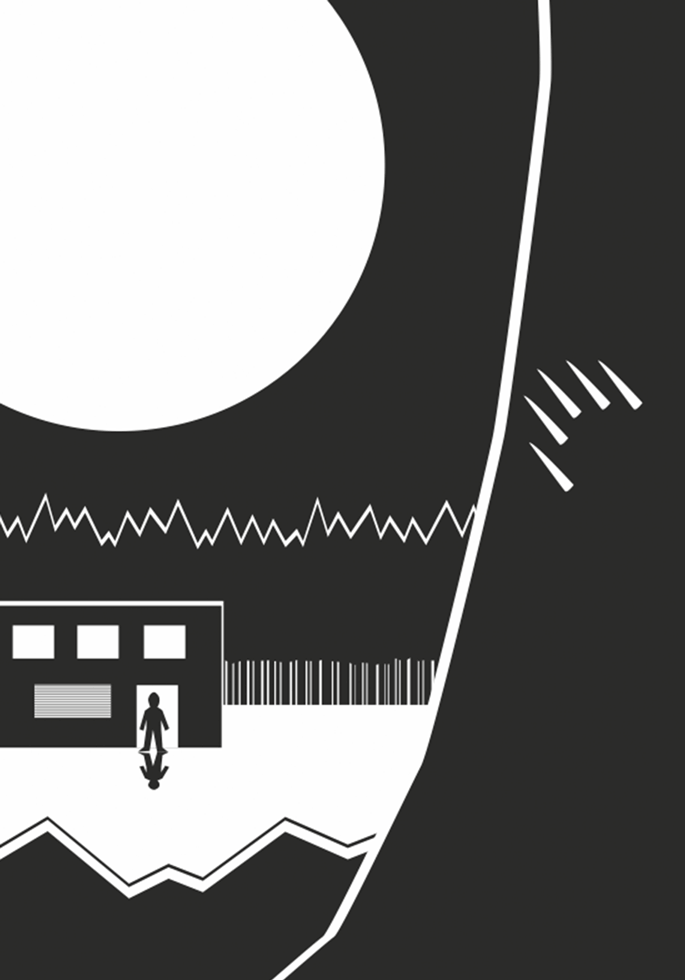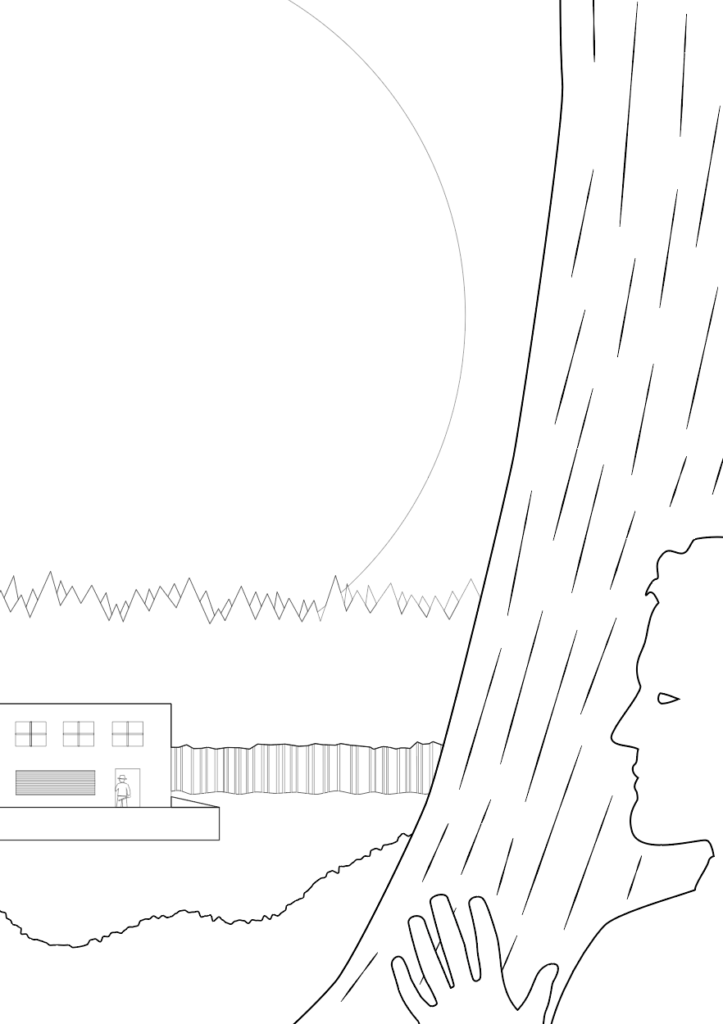Brief
Produce a line visual around one of these words:
- Sea
- Extraordinary
- Building
- Journey
Through brainstorming you may decide to draw from an object or selection of objects or work in a more narrative way around a scene or idea. Ensure that the line visual you produce through visual exploration and development is very clear, employing a line which is solid and definite – fine-liners over a pencil visual should give a clean edge.
Photocopy or scan your image so that it fits into A3. Using the invert function on the copier or computer produce an additional copy where the line has been converted to white and the white of the paper has become black.
Using the lines in your image as a guide, cut shapes from the black copy to collage into the white copy. Your ‘filling-in’ should be considered – are you going to suggest that there is light entering from one direction or use white in a decorative way to create a visual pattern? Work with the biggest areas first and maybe Blu-Tack your pieces down until you are confident about their final placing.
To refine your image re-introduce white shapes to the black areas where needed, by cutting from another sheet. There should be no lines left when this exercise has been completed. You are working with areas of black and white and the lines are the edges that you will cut around.
Keep standing back from your image to assess its readability – you are aiming for visual legibility and need to avoid creating a disjointed piece. As well as physically standing back, visual distance can be achieved by looking at an image in a mirror, by scanning and looking at it on screen or by printing out a scale different from the original.
When you have finished compare your tonal image to your line drawing. How has the use of black and white altered it? Where does the focus now lie within the image? Make notes in your learning log.
An image, which is simplified in this way, is often described as a ‘graphic’ image. Are there any examples of other illustrators’ work which you could describe as graphic?
I decided to research some ‘graphic’ artists before getting started to try and find some inspiration:
- Saul Bass
- Kristian Jones
- Shoto Pop
- Sneaky Raccoon
- Tim McDonagh
- Lynd Ward
- George A. Walker
- Kara Walker
- Eric Drooker
- Frans Masereel
- Wordless Novels
The artists that I focused on was Geoff Grandfield as I felt his narrative work most closely represented the mood and style that I wanted to try and convey in my illustration. I liked the dynamic composition of Grandfield’s work as it made me feel I was part of the story, looking in on the often dramatic action.
I started off by mind mapping and doing some rough sketches of ideas. I tried to keep my options open in terms of which word I would select, so that I did not narrow my choices down too early, which I have a tendency to do. I tried to envisage how each idea would look using just black and white.
I thought the above ideas would be quite complex and I wanted to try to replicate Grandfield’s minimalist style.
I decided on which sketch to use (based on the word ‘building’) and then divided an A4 sheet of paper into thirds so I could work out where to place focal points in the image. I tried various compositions.
Although the brief suggested using collage of black and white paper, I decided I could get a similar effect digitally scanning the draft into Illustrator. I also thought it would be less time-consuming and easier to keep it simple if I did not did it this way. I would want to start drawing in lots of details and then get too involved with this aspect, rather than the purpose of the exercise. I also do not have access to an A3 printer. Once in Illustrator, I continued refining the illustration.
Originally I was going to have claw marks on the tree and make the person in the building look more like the ‘potential victim’, but then decided to go with the silhouette of a person hiding behind the tree which I felt adds more ambiguity and added intrigue to the illustration. It’s only when you focus in on the building that you see the person looks like he is up to no good. I tried to think about placement of the focal points in the composition and scale.
The final illustrations can be seen below.
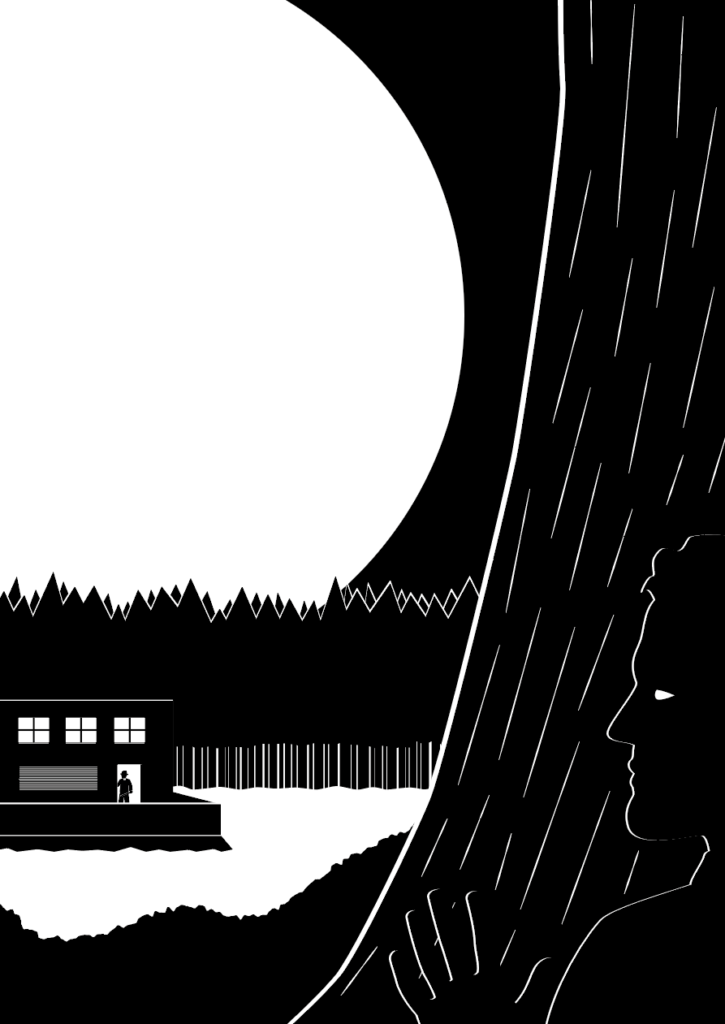
I think the use of black and white, as opposed to just the outline, adds depth and makes the illustration more dramatic and eye-catching. The focus of the outlined version seems to be the tree/hiding person (but this could be due to the increased line thickness, so probably there should be no overall focus in this version as everything is on the same ‘level’). The focus of the black and white version is the areas where there is a contrast of light and dark, the white standing out against the black. I hope the viewer’s eye would be drawn to the building due to its placement, greater detail and the strong contrast of white on black,.
I found this exercise satisfying and felt I learnt a great deal from it. Although I think I may have gone off in my own direction and not followed the brief exactly, hopefully I have produced a relevant outcome and can carry what I have learnt forward.
Resources
Hassell, L. (2018). 38 tips for creating stunning black-&-white art. [online] Digital Arts. Available at: https://www.digitalartsonline.co.uk/features/illustration/38-tips-for-creating-stunning-black-white-art/ [Accessed 24 June 2020].
Stribley, M. (n.d.). Designing with black and white: 50 striking examples for your inspiration. [online] Canva. Available at: https://www.canva.com/learn/black-and-white/ [Accessed 24 June 2020].
